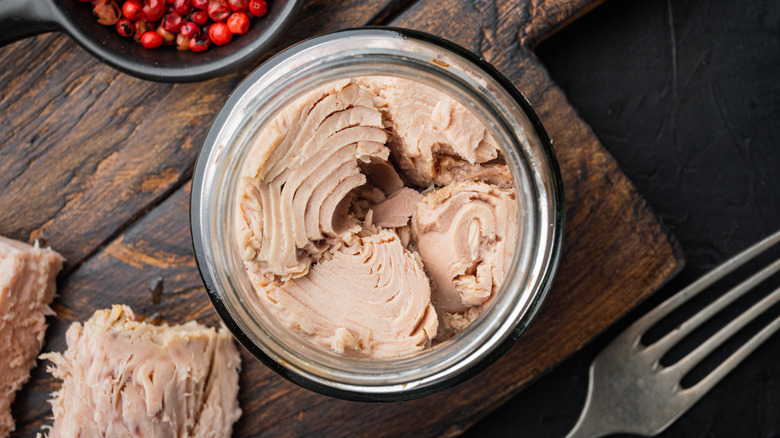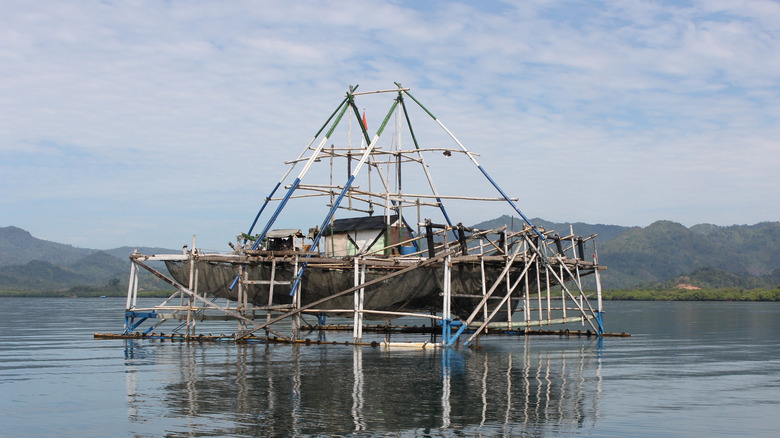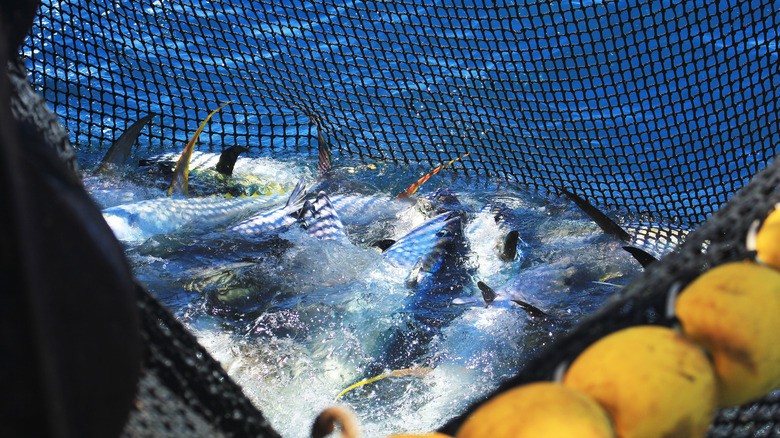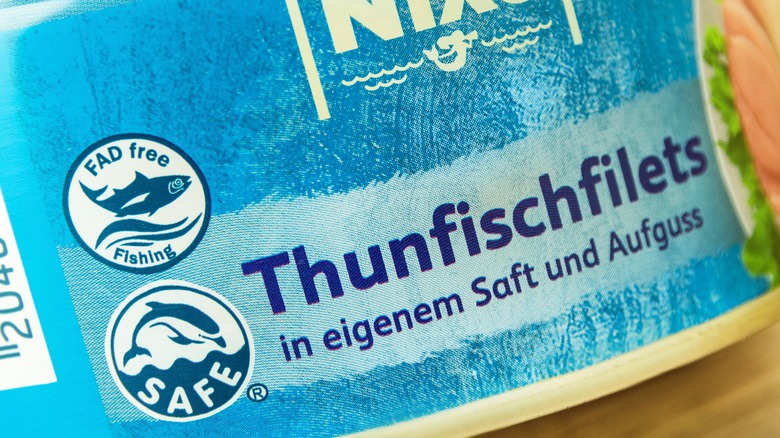What Does The 'FAD-Free' Label On Canned Tuna Mean?
Consumers who are concerned about the environmental impact of their seafood purchases may sometimes feel like they need to take a course to understand all the terms and factors that come into play. Terms like "dolphin safe" are ones we think we understand, but as National Geographic points out, the three biggest tuna brands in the U.S. — StarKist, Chicken of the Sea, and Bumble Bee — are currently embroiled in a class action lawsuit that says they are misleading consumers with marketing initiatives that highlight the safety of dolphins and a dedication to sustainability. It turns out that even terms like "dolphin safe," which we think are straightforward, may not mean exactly what we think they do, and they also rely on the honesty of players who have every financial reason to be less than forthcoming.
Bill Carvalho, the founder of the sustainable seafood company Wild Planet, told National Geographic that conservation comes with a cost. "You can't do this for 59 cents a can," he explained, adding, "Cheap tuna comes at an astronomically high environmental price." If you're examining cans of tuna, attempting to select fish that's sustainably and ethically obtained, one of the terms you'll encounter is "FAD-free." But what does that mean, and why does it matter?
FAD stands for Fish Aggregating Device
When you find the term on a can of tuna, it means, according to the Marine Stewardship Council, that the tuna was caught without using a Fish Aggregating Device, or FAD. The Council goes on to explain that FADs are objects that float on the surface of the water, casting a shadow beneath them. Public Goods explains that some marine species are attracted to these shadowy waters, perceiving the FAD casting the shadow as protection from predators above the water's surface.
And FADs are amazingly effective at attracting tuna. In 2020, for example, the International Seafood Sustainability Foundation reported that roughly 36% of the total tropical tuna catch was made using FADs. In addition, a research study published in Coastal Management in 2020 found that in 2018, global tuna catches were 5.2 million metric tons, more than tripling from the early 1990s. This increase is mostly attributable to the invention of Fish Aggregating Devices (FADs). Since, as DownToEarth points out, hundreds of millions of people rely on jobs from fisheries worldwide, and seafood constitutes a significant source of protein for people all over the globe, wouldn't FADs be a good thing since they dramatically increase fisheries' ability to catch larger amounts of tuna?
The environmental impacts of FADs
Public Goods gives a concise account of FADs' negative impacts on the environment: They support overfishing, increase bycatch (catching unwanted species), and contribute to ghost gear or abandoned fishing equipment. How big are these problems? In short, they're huge.
In terms of overfishing and bycatch, Pew notes the most common use of FADs in tuna fishing is by vessels using purse seines, enormous nets that are perhaps the most indiscriminate fishing technique, as the National Oceanic and Atmospheric Administration's Fisheries Department explains that purse seining is a non-selective fishing technique that catches in everything in its path, even protected species. The method, which is made far more effective by the use of FADs, rounds up juvenile tuna, which then can't reproduce to replenish the population, as well as to pull in sharks, dolphins, sea turtles, and a host of other fish species.
As far as the FADs themselves, they're an environmental concern as well. Galapagos Conservation Trust notes that in 2015, it was assessed that more than 100,000 drifting FADs were launched each year, and that number was likely to increase. Unfortunately, of those 100,000 FADs, a mere 10% are recovered, meaning that these devices, made mostly of materials that aren't biodegradable, simply add to the pollution of our oceans.
Is the FAD-free label on canned tuna important?
Organizations like the Marine Stewardship Council maintain that FADs can be used in sustainable fishing as long as there's oversight and careful management. That means that tuna caught in a purse seine, using FADs, can still have the Council's "blue fish tick" seal of approval. Other organizations, like Monterey Bay Aquarium Seafood Watch, recommend looking for a label that specifies that the tuna is FAD-free. Seafood Watch does point out that FAD-free tuna may still be caught using a purse seine, meaning there will be a bycatch, but the use of these devices significantly increases that bycatch.
Public Goods notes that while there have been relatively recent attempts to regulate the use of FADs, those measures haven't been terribly effective. They recommend seeking out tuna that's labeled FAD-free or "pole & line" caught and point out that if canned fish doesn't carry the FAD-free designation, it was most likely caught using this device. It's important to note that some pole and line vessels use FADs, too, according to the UN's Food and Agriculture Organization, so seeking out labels that specify FAD-free is the only way to ensure Fish Aggregation Devices haven't been used. Reading labels and making more sustainable choices are one of the ways we can all contribute to ensuring there is plenty of fish in the sea for generations to come.



